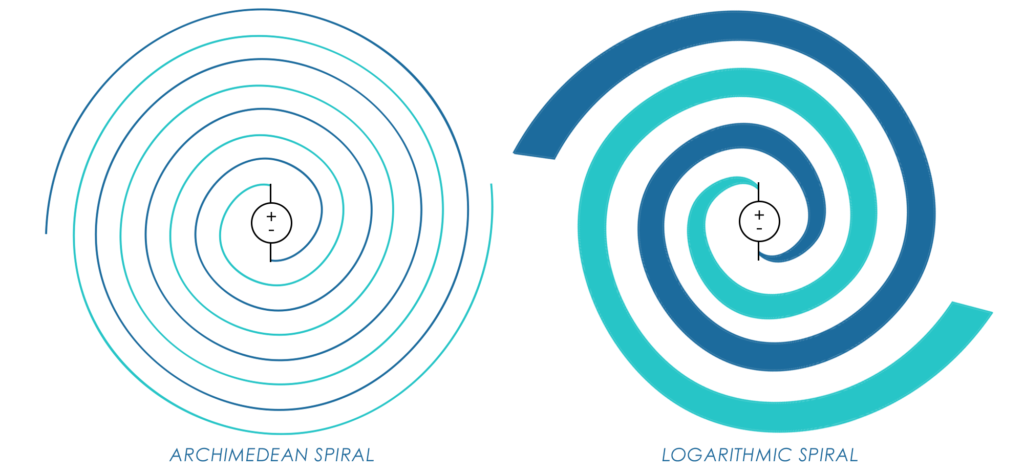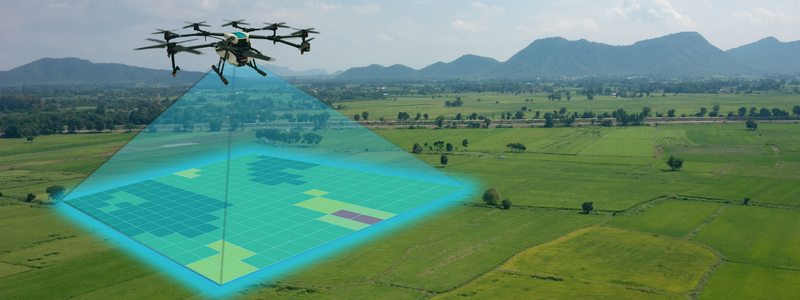Large Bandwidths in Small Packages: Spiral Antennas
December 2020Frequency independent antennas theoretically have no bandwidth limitations. Polarization, radiation pattern and impedance of such antennas remain unchanged over large bandwidth. Spiral antennas are a type of frequency independent antenna first introduced in the 1950s. Their spiral design allows them to be relatively small.
Characteristically, spiral antennas have low gain, but an array of spirals can produce higher gain.
They transmit circularly polarized radio waves and receive linearly polarized waves in any orientation. They also attenuate circularly polarized signals received with the opposite-rotation. They can reject circularly polarized waves of one type, while being able to receive those with a different polarization.

Spiral antennas usually have two conductive spiral arms, which extend from the center outwards.
The direction of rotation of the spiral defines the direction of the antenna polarization. More spirals may be added to form a multi-spiral structure. Spirals can take the form of a flat disc or a three-dimensional shape like a screw thread. As with microstrip antennas, the spiral can be printed or etched over a specifically chosen dielectric medium. While spirals have several classifications, the Archimedean spiral and logarithmic spiral are the two most common.
Spirals, such as several of those featured in JEM Engineering’s HSA product line, are widely used in the defense industry for sensing applications, where there is a need for very wideband antennas that can fit in smaller spaces. Spiral antenna arrays are used in military aircraft in the 1 to 18 GHz range. Other applications include direction-finding, frequency spectrum monitoring, as well as GPS, where RHCP antennas are common.
Latest Posts

Part I: Taking Measurements With Drones
UAVs, also nicknamed, “drones,” are exceptional at capturing a bird’s-eye view. This is one of the reasons why they’re popular for measuring.

Part II: Signal Monitoring Techniques
Signal monitoring techniques are methods used to observe, analyze, and interpret various types of signals, such as electronic, electromagnetic, or digital signals.
